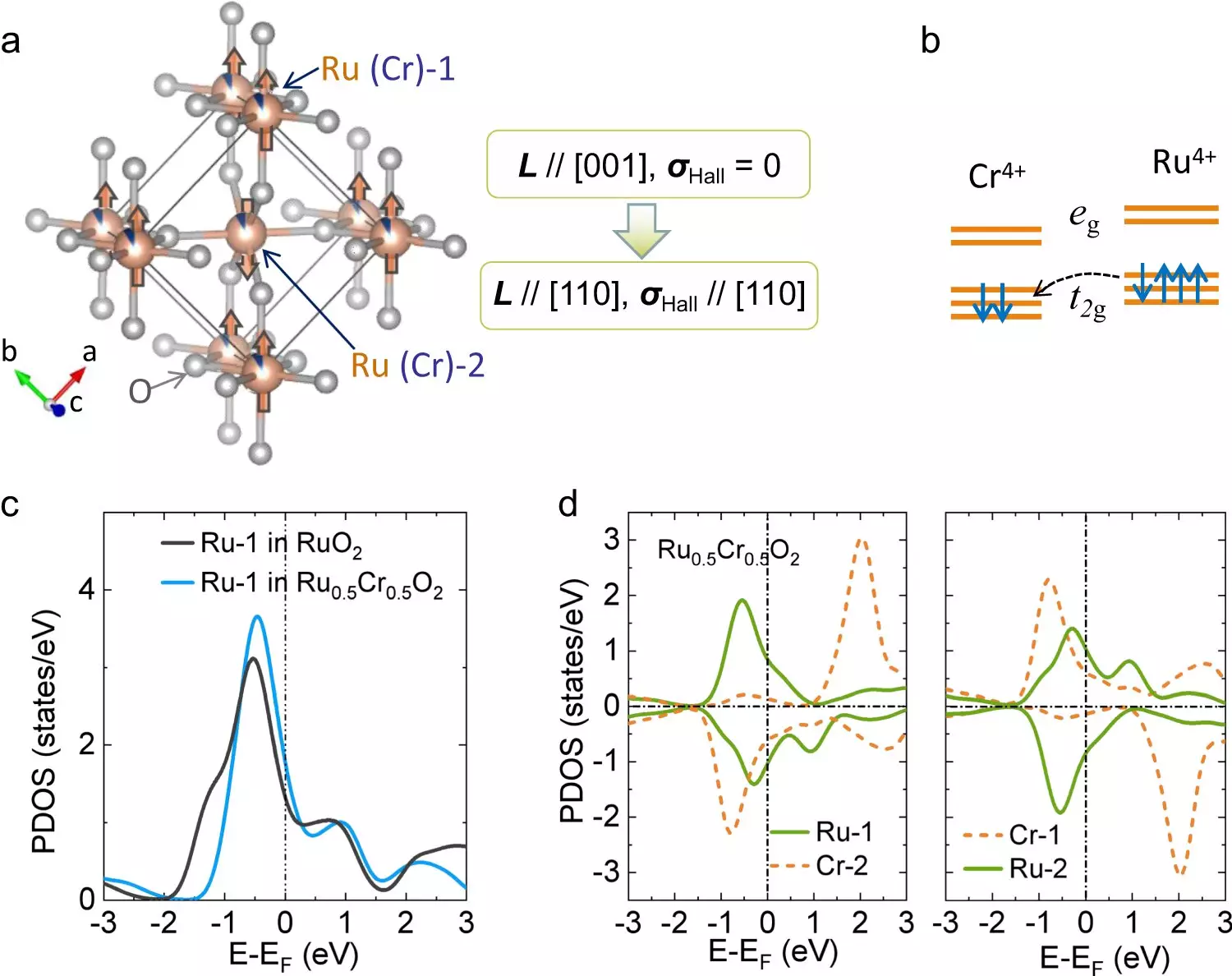In a world where technology is advancing at a rapid pace, the need for faster and more efficient computer memory storage has never been greater. A recent development by RIKEN physicists has the potential to revolutionize the way memory devices function, paving the way for higher memory density and faster memory writing speeds.
Memory devices such as hard disks rely on ferromagnetic materials like iron and cobalt to create magnetization patterns for data storage. However, these materials come with their own set of challenges. Neighboring areas can interfere with each other, leading to data corruption, and switching magnetization patterns can be slow. This limits the memory density and speed of current memory devices.
Antiferromagnetic materials, where the magnetic fields of adjacent atoms align in opposing directions, hold promise in overcoming these challenges. Physicists have long theorized that certain antiferromagnetic materials could exhibit the “anomalous Hall effect,” a behavior that could be utilized for storing and reading out data without the need for an external magnetic field.
RIKEN physicists, led by Meng Wang, have successfully demonstrated the anomalous Hall effect in an antiferromagnetic metal containing ruthenium and oxygen, with the addition of a small amount of chromium to enable the effect. This marks the first time that the anomalous Hall effect has been observed in a simple co-linear antiferromagnetic structure, making it highly attractive for practical applications.
One of the key advantages of this new magnetic material is its ease of fabrication in thin film, making it a viable option for mass production. This could lead to significant advancements in computer memory storage technology, with the potential for higher memory density and faster memory writing speeds.
The development of this new magnetic material by RIKEN physicists represents a significant breakthrough in the field of computer memory storage. By harnessing the anomalous Hall effect in antiferromagnetic materials, the future of memory devices looks more promising than ever before. With the potential for increased memory density and faster data processing speeds, this innovation could shape the way we store and access data in the years to come.



Leave a Reply